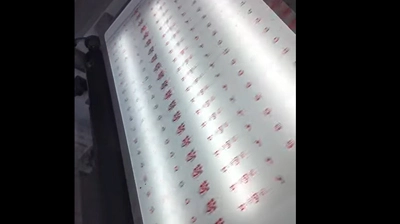KEDE New Material's Printed Composite Film is chosen high quality materials that ensure long-lasting durability and reliability. Each batch of printed laminated film undergoes stringent quality control measures to ensure that our printed laminated film delivers exceptional barrier properties, effectively safeguarding your products from moisture, oxygen, and other potential contaminants.
Our printed laminated films are compatible with a variety of printing techniques, allowing for vibrant, detailed, and high-resolution graphics that elevate your product’s branding and market presence. Additionally, KEDE New Material's printed laminated film offer excellent mechanical strength and flexibility, making them ideal for a wide range of packaging applications, including food, beverages, pharmaceuticals, and consumer goods.
| Inspection item | Indicator Scope |
| Thickness Ranges | ≤1um |
| Quantltatlon | 30±1 g/m2 |
| Horizontal split | ≥4Km |
| Tensile strength (Longitudinal) | ≥20N/15mm |
| Tensile strength (Transverse) | ≥10N/15mm |
| Elongation rate (Longitudinal) | ≥7% |
| Elongtion rate (Transverse) | ≥15% |
| Average Track-Reslstant lndex | ≥1.4 mN·m2/g |
| Antl-vlscoslty | ≥70% |
Moisture content | 8±2 % |
| Glycerol | according to actual % |
Printed composite film is a type of cellulose film that is widely used in various industries, including food, pharmaceuticals, and consumer goods. Here are some key features of printed composite film:
Multi-layered: KEDE New Material's Composite films are typically made up of multiple layers of different materials, each contributing a specific property to the overall packaging. This could include a combination of plastic, aluminum, paper, or other materials.
High-quality Printing: This biodegradable packaging film can be printed with high-quality, vibrant colors and intricate designs. This makes them ideal for product branding and providing product information.
Barrier Properties: KEDE New Material's Composite films often have excellent barrier properties, protecting the product from moisture, oxygen, light, and other external factors that could compromise product quality.
Durability: The multi-layered structure of composite films often makes them more durable and resistant to punctures or tears compared to single-layer films.
Versatility: The Composite films from KEDE New Material can be customized to meet the specific needs of the product being packaged. This includes varying the thickness, barrier properties, and other characteristics of the film.
Sealability: These films can be easily sealed, often through heat-sealing processes, to create a secure package that protects the product and extends its shelf life.
Cost-Effective: As a professional packaging film factory, KEDE New Material's composite films are often a cost-effective packaging solution, particularly for products that require a longer shelf life.
Recyclable: KEDE New Material's printed composite films can be recycled, contributing to more sustainable packaging practices.
One of the primary applications of printed composite films is in composite films for food packaging. These films provide excellent barriers against moisture, light, and oxygen, helping to preserve the freshness and extend the shelf life of food products. With the added benefit of customizable printed designs, businesses can showcase their branding while ensuring the safety of their products.
At KEDE New Material, sustainability is at the heart of our operations, especially in the production of printed composite films. We are committed to adopting eco-friendly practices throughout the manufacturing process, ensuring that our products not only meet high-performance standards but also contribute to a more sustainable future.
Composite films for food packaging are a core part of our sustainability efforts. These films are engineered to preserve the freshness of food while minimizing waste and ensuring recyclability. By providing high-quality barriers against contaminants, we reduce the need for excess packaging materials, which helps lower the environmental footprint of food packaging.

 Call us on:
Call us on:  Email Us:
Email Us:  Nine One Mound Haitu Binhai Industrial Zone, Keqiao, Shaoxing, Zhejiang, China
Nine One Mound Haitu Binhai Industrial Zone, Keqiao, Shaoxing, Zhejiang, China